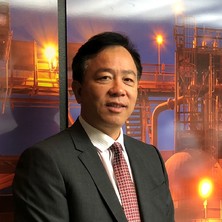Mine wastes: leave them, cover them, or change them for sustainable outcomes
 Subtitle: How do we rehabilitate colossal volumes of mine wastes more cheaply and with long-lasting outcomes?
Subtitle: How do we rehabilitate colossal volumes of mine wastes more cheaply and with long-lasting outcomes?
Speaker: Professor Longbin Huang, leader of the Ecological Engineering of Mine Wastes in SMI’s Centre for Mined Land Rehabilitation
Abstract:
Mining sectors and communities face ever-increasing environmental and health risks from mine wastes as a result of mining and processing precious and base metal ores. A snap-shot of tailings generated from the two major economic metals, Aluminium and Copper, show that between 1990-2011 there was an estimated 24-47 billion metric tons of tailings generated worldwide based on an average world Cu-ore grade of 0.5-1.0% (Matos and comp., 2015; Mudd, 2009). In the bauxite industry, more than 4 GT of red mud is currently stored in tailings facilities across the world, with an estimated increment of 120 million tons per year.
Leaving waste to become legacy sites is illegal however, the high costs of rehabilitating mine waste using conventional cover of benign waste rocks and earth materials is a huge financial challenge to the industry. It costs approximately $1 million per hectare to rehabilitate sulfidic and bauxite tailings. Ecological engineering of mine wastes aims to harness bio-chemical weathering and transformation of tailings minerals to alter tailings in situ, for cost-effective and sustainable outcomes. In this webinar Professor Huang, will present on his team’s research in this field and their vision to transform tailings rehabilitation practice for the future.
About SMI Webinar Series
The Sustainable Minerals Institute Webinar Series showcases the exciting research underway across SMI - from processing to social performance to health and safety - join us on a Tuesday for the presentation followed by Q&A with the researcher.
